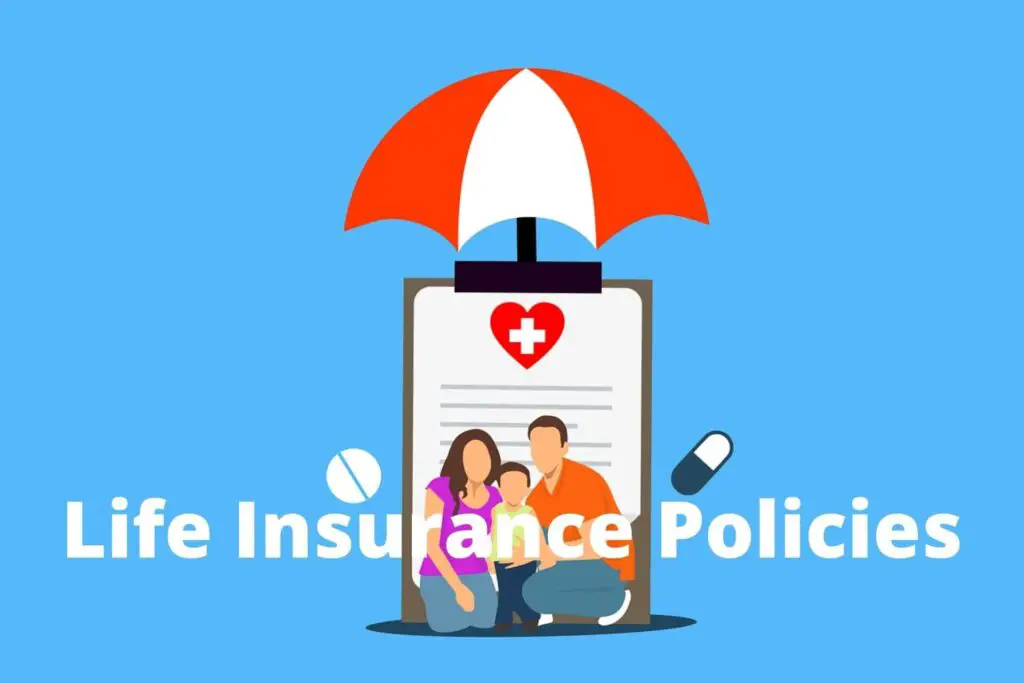Do you know what is life insurance? Getting life insurance, nowadays, is common. The most common reason for hiring it is to protect the family, who are the people one loves most, in the event that the policyholder dies or, also, suffers some type of disability.
Are We Clear About What Is Life Insurance?
Although it is true that, as we have mentioned, more and more people are taking out life insurance, there are many others who still do not know in depth what this product consists of.
Something that is going to change thanks to this article in which, in detail, we explain what life insurance is, delving into its different coverages, types, and, above all, the benefits it can bring. We will therefore answer the question you are asking yourself at this moment: is it worth taking out life insurance? Keep reading to find out!
Read Also: What is Small Business Insurance | Types and Policies
What is the Insurance of Life?
Talking about what life insurance means talking about a product that, after paying a premium (monthly, quarterly, semiannual, or annual), guarantees the payment of an amount to the family members of the policyholder if he or she dies or suffers from some type of illness. disability.
In short, it represents economic protection for the family in any of the aforementioned cases.
What is a Life Insurance Premium?
The premium is the fee paid by the policyholder to keep the life insurance policy active. Its value depends, in most cases, on factors such as age, state of health or habits and customs, as well as the coverage contracted and the capital agreed upon as compensation for the beneficiaries. Insurance.
The payment of the premium, another aspect to take into account, can be done in two ways:
- In a single payment (this is what is known as Single Premium). It is usually a requirement when you are over 65 years of age.
- In installments (this is what is known as Periodic Premium), which can be divided monthly, quarterly, semi-annually, or annually.
Who is Part of Life Insurance?
Once you know what life insurance is, the next step is to analyze the agents who “participate in it”, which are:
- Insurance policyholder: a person who contracts the insurance (and pays its premium).
- Insured: a person who is covered by the life insurance policy. Usually, it usually coincides with the policyholder.
- Insurer: an entity with which life insurance is agreed and, therefore, to which the premium is paid. It will be in charge, once the time comes, of compensating the beneficiary.
- Beneficiary: a person who receives the capital established by the insured in the life insurance policy (when the conditions set out in the contract are met). It is designated by the insured himself.
What are Life Insurance Policies?
Life insurance is precisely an economic plan that aims to be a substitute for the resources that a person generates. When purchasing life insurance or any type of insurance, there are many terms to know such as premium or beneficiary, and documents, of which you must have information, such as the insurance policy.

Life Insurance Policies
It is a legal document or contract between the insurance policyholder and the insurer. The policy establishes the rights and obligations of each of the parties. That is, the terms are established by which an insurer is committed to compensating for damage, while the insured agrees to pay a certain premium or amount for a specific time.
The covered risks and exclusions are established in the policy. For example, some life insurance policies cover events such as suicide, while others do not unless they meet certain specifications, such as a certain time after paying the premium.
Typically, the policy is made up of general and specific conditions. In the general ones you can find definitions of technical terms, details of coverage or risks, exclusions expressed in detail, but also limits (maximum amounts covered by the insurer).
The particular conditions determine the identification of the insured, the contracting party’s data, type of insurance, general conditions, beneficiaries, exclusions, insured capital, validity, contract date, etc.
Financial Security
Life insurance allows you to provide financial security to your family members and the opportunity to live with peace of mind in the event of an accident, death, or disability. But to achieve this, first, it is necessary to know about the life insurance policy and thus clearly establish the way in which you or your loved ones will be insured.
• Life insurance is an economic plan to prevent or anticipate any type of accidental event.
• When purchasing life insurance you must know terms such as premium, but also obtain information about the documents you receive, such as the life insurance policy.
• A life insurance policy is a legal document or contract that determines the rights and obligations of the parties.
• In a life insurance policy, it is necessary to check that the information on the insured person, the beneficiaries, the validity of the contract, coverage, exclusions and risks, benefits, maximum amount of coverage, deductibles, method of payment of the premium, etc. is correct.
• It is advisable to read and review the life insurance policy in detail to avoid future extra paperwork or inconveniences that could harm the beneficiaries.
What Types of Life Insurance Can You Access?
There are several types of life insurance on the market, each with its own characteristics:
Term Life Insurance
In this case, the life insurance policy is established for a finite period of time, which can range from one or several days, months, years, or, in certain cases, up to a certain age (for example, 65 years).
It is usually used to cover specific needs. If during the period stipulated in the life insurance policy, no mishap is suffered, the insurer will not have to pay any compensation and the policyholder will not be able to recover the money invested.
Whole Life Insurance
This type of life insurance protects the insured throughout their life, regardless of whether their death or disability occurs when it comes to compensating the beneficiaries of the policy. Your premium will always be the same (it will not change based on factors such as age, inflation, etc.) and will be paid as:
- Lifetime: until death occurs.
- Temporary: for a specific period of time (10, 20, or 30 years, for example), after which life insurance coverage continues to be maintained (until the death of the insured).
Risk Life Insurance
This type of life insurance aims to protect the different members of the policyholder’s family, in the event that the policyholder dies. Its premium is paid annually and is calculated based on the age and medical history of the policyholder, as well as on the capital that the policyholder agrees to for future compensation.
Savings Life Insurance
This type of life insurance combines the coverage for death (or disability) that is contemplated in a risk life insurance policy with the advantages offered by a savings plan.
Thus, with savings life insurance (in which the policyholder, the insured and the beneficiary usually coincide), the capital that has been saved during the duration of the policy is received (in a single payment or in installments), although, At the end of this, you will still be alive. Likewise, it is possible to include a clause in which the money saved, in the event of the policyholder’s death, is paid to one or more beneficiaries.
How Does Life Insurance Work?
Premium Payment
Firstly, and as we have advanced in the previous section, to have the “protection” that life insurance guarantees, you must pay a fee or premium (monthly, quarterly, semi-annual, or annual). Its cost will depend, among other aspects, on the age, state of health, or the habits and customs of the insured in the policy, as well as the coverage that is going to be contracted and the capital that is planned to be established as compensation.
Once the premium is paid, the insurance company acquires the commitment to comply with what was agreed in the life insurance contract, that is, it must pay the amount stipulated therein in the event that the insured dies or suffers a disability ( according to the coverage and conditions indicated in the policy).
When to take out Life Insurance
Most people think that life insurance is a good idea only when they have dependent family members or children. However, it’s not always like that. Imagine that you lead an independent lifestyle and that, due to various circumstances, you cannot continue working and continue to meet your financial responsibilities.
Well, in these cases, life insurance would also allow you to have financial support that would offer you a lot of peace of mind. This is why there is no specific age to take out life insurance, although most people decide to do so from the age of 30 motivated by financial responsibilities or the desire to start a family. In any case, making this decision will depend on personal circumstances.
What is true is that after 50, life insurance complements very well with others to organize the years of old age so that you can enjoy them calmly and without worries. But, regardless of this, the importance of life insurance is not in doubt to guarantee your peace of mind, especially in the following situations.
When Starting a Family
Currently, 35 is the average age at which a family is formed, which is an even more compelling reason to consider investing in whole life insurance, especially if the other members depend or will depend financially on you. you. In other words, if contracting an illness or death represents a danger to the family economy, life insurance is vital.
When You Take Out a Mortgage
It is even more advisable to purchase life insurance when you commit to paying a mortgage because, in the event of your death, your family will not only stop counting on your salary but will also have to face long-term debt. And, if you cannot afford it, you may be left without your home.

Life Insurance Coverage
The most basic coverage of life insurance is death, which assumes the funeral expenses and your beneficiaries receive the amount of money you contributed during your lifetime.
However, it also serves to cover other types of risks such as temporary or permanent, partial or absolute disability, and death due to special causes (accident or serious illness). However, there are different types of life insurance.
Family Life Insurance
They protect your family against risks that could cause economic damage. For example, in the event of the death of a family member, they cover funeral expenses, they also protect children against orphanhood due to accidents and other circumstances such as absolute permanent disability, death, or serious illness.
Professional Life Insurance
It is ideal for the self-employed. If your family and your business depend 100% on you, this is the appropriate insurance to give financial peace of mind to your loved ones in the event that an unexpected event occurs.
Payment Protection Insurance
If you have a mortgage, this is your indicated policy. Well, it consists of protecting your family members against possible bank debts that they may incur when you are no longer around to assume them.
What must a beneficiary do to collect life insurance?
It is the entity or insurance company that is responsible for paying financial compensation to the beneficiaries of the policy.
Taker
It is the person who contracts the insurance. He does not have to coincide with the insured, although in most cases the person usually takes out life insurance for himself. In any case, it is possible to take out a life policy for our partner or children.
Insured
It is the person on whom the risk (death or disability) falls. If the policyholder takes out the policy for himself, he would also be the insured.
Beneficiary
This is the person who will receive financial compensation from the insurance company in the event that the insured suffers any damage stipulated in the policy coverage. In the case of death insurance, it is logical that the beneficiary cannot coincide with the insured, but if we are talking about a disability situation then the insured and the beneficiary could be the same person.
How is the Amount of a Life Policy Determined?
Deciding how much will be enough can be the hardest part if you don’t have the help of a professional. The insurance company can make recommendations based on your credit capacity, in addition to the debts and financial commitments you have acquired with other entities.
In any case, it is essential that the agreed sum is sufficient for the beneficiaries to be able to meet the anticipated debts and expenses. Experts advise that this calculation be made taking into account 5 years of full salary.
It is worth mentioning that the insurance company has the right to reject the contract in the event that you are considered an immediate high-risk subject, either due to your health, age, or legal reasons.
Conclusion
In conclusion, the purpose of life insurance is to protect the future of your family or those in your care when they depend totally or partially on your salary or your savings. Remember that there are different types of life insurance and that, at Allianz, our recommendation is that when purchasing it you are very clear about what you want it for.
This way, you can choose the one that perfectly suits your needs. Likewise, we advise you to be transparent and read the coverage and exclusions in detail. If you want to know the types of Allianz life insurance, review our coverage, and remember that if you want personalized attention, our advisors are here to help you.



